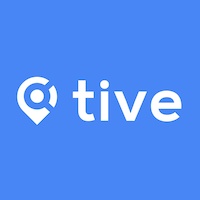Resumen de la semana: desde condimentos robados hasta medicamentos vivos (y todo lo que las API tocan en el medio)

October 9, 2025
October 24, 2025
x min read

Alguien en Ontario está organizando la fiesta más ilegal del mundo con salsa robada por valor de 35 000 dólares, y eso es solo el aperitivo de la actualización de la cadena de suministro de esta semana. Estamos rastreando a los ladrones de carga canadienses que han migrado del whisky a los suministros para nachos, viendo a Hormel abandonar el tocino en Georgia para transformarlo en 250 millones de dólares y descubriendo cómo Merck convirtió el precipicio de las patentes en un reductor de velocidad al hacer que su medicamento contra el cáncer de 30 000 millones de dólares fuera inyectable en menos de dos minutos. Además, las API gestionan en secreto toda la cadena de suministro y procesan 50 000 millones de llamadas al día, y el envío de células CAR-T vivas requiere más cuidado de niños que un recién nacido, ya que un grado de calidez convierte un tratamiento de seis cifras en una sopa muy cara. ¡Abróchate el cinturón!
Resulta que los camioneros también deben vigilar sus mercancías al norte de la frontera
Las noticias de la semana pasada sobre el robo de carga en México aumentaron acaparó los titulares, pero en el norte de Ontario, están aprendiendo rápidamente que robo de carga no es solo un fenómeno al sur de la frontera.
Crónicas del robo de carga en Canadá
La primavera provocó la desaparición de 1000 cajas de whisky valoradas en 500 000 dólares de un camión de transporte de Windsor. En verano, 530 cajas de carne asada deshuesada valoradas en 222.000 dólares desaparecieron de un remolque estacionado, lo que dejó desconsolados a los amantes de las barbacoas de todo el mundo. Pero el 27 de septiembre, a las 20:30 horas, llegó a su punto máximo de absurdo cuando unos ladrones se llevaron un remolque de 16 metros que contenía salsa y salsa de un lote de Tecumseh por valor de 35 000 dólares, y luego se atrevieron a devolver el camión más tarde esa misma noche.
El elaborado baile de los bandidos de la salsa
No eran los típicos aficionados a aplastar y agarrar. Una hora después del robo de la salsa, los ladrones se llevaron un segundo camión de transporte que estaba en las cercanías, remolcando lo que la policía sospecha que era el cargamento picante. La gran camioneta finalmente apareció dos días después en Ajax, Ontario, misteriosamente sin salsa. La policía cree que un Jeep Rubicon escondido cerca de las dos escenas del robo podría ser la clave para resolver esta conspiración de condimentos. Pero por ahora, todo lo que sabemos es que en algún lugar, alguien está organizando la fiesta más surtida que Ontario haya visto jamás.
La ruptura del tocino de Hormel: Por qué una planta de Georgia tuvo éxito
Hormel Foods solo puso fin a la producción de tocino en sus instalaciones de Tucker, Georgia, y es natural preguntarse por qué una empresa dejaría de consumir la carne de desayuno favorita de los Estados Unidos. ¿La respuesta? La empresa decidió que las líneas de tocino envejecido de la planta no merecían la enorme inversión necesaria para ponerlas al día con sus grandes planes. A veces, los equipos viejos necesitan algo más que una curita.
El cambio de imagen de 250 millones de dólares
La iniciativa Transformar y Modernizar de Hormel avanza más rápido de lo esperado. Lanzada a finales del año fiscal 2023 con un objetivo a tres años y 250 millones de dólares, la empresa ya ha ejecutado 90 proyectos solo en el tercer trimestre, desde el cierre de la planta de tocino de Georgia hasta la apertura de un nuevo centro de distribución en Memphis. La Oficial Principal de Finanzas Jacinth Smiley espera obtener entre 100 y 150 millones de dólares en beneficios cuando el año fiscal finalice en octubre, lo que situaría a Hormel casi a la mitad de su objetivo para el primer año. ¿El secreto? Lo ataca todo a la vez: estandariza las operaciones mediante su nuevo sistema de producción Hormel, crea una oficina de análisis de datos y se replantea toda la cadena de suministro.
The Shuffle at the Top
Toda esta reorganización operativa requiere liderazgo, lo que explica por qué el mando de la cadena de suministro de Hormel cambia de manos más rápido que una papa caliente. Steve Lykken se ganó el puesto de vicepresidente de cadena de suministro del grupo en 2024, y se fue en abril. Luego, Kevin Myers se puso en esa posición que aún estaba abrigada como vicepresidente interino del grupo.
Un medicamento genera la mitad del dinero de Merck: ¿y ahora qué?
El medicamento insignia de Merck, Keytruda, recaudó 29.500 millones de dólares el año pasado, lo que suena muy bien en teoría. Pero hay un inconveniente: casi la mitad de los ingresos totales de Merck está consumiendo este único medicamento. Las ventas alcanzarán los 32 700 millones de dólares en 2026, caerán por un precipicio cuando caduque la patente y se desplomarán hasta situarse en torno a los 7 000 millones de dólares en 2032. Así pues, Merck decidió protegerse y lanzó Keytruda Qlex: una formulación subcutánea que reduce el tiempo de administración de 30 minutos a uno o dos minutos.
Haga los cálculos con ambas drogas y el pánico se desvanecerá
Al observar las cifras proyectadas, se revela por qué Merck no entra en pánico. Sí, solo Keytruda podría caer desde su máximo previsto de 32.700 millones de dólares, ya que los biosimilares acabarían con su cuota de mercado. Pero esto es lo que los analistas podrían estar pasando por alto: se prevé que Qlex aumente de forma agresiva, pasando de 896 millones de dólares en 2026 a 7 100 millones de dólares en 2032. Si estas previsiones se mantienen, Merck podría tener un total de 14.300 millones de dólares en 2032, es decir, el doble de lo que aportaría Keytruda por sí sola.
Nadie quiere soportar una infusión de 30 minutos
Aproximadamente entre el 30 y el 40% de los pacientes abandonan la vía intravenosa para administrarlos por vía subcutánea, lo que puede no parecer revolucionario hasta que se dé cuenta de por qué es probable que el resto no lo haga: de todos modos, ya están conectados para que les administren otro medicamento por vía intravenosa. Sin embargo, para aquellos que pueden cambiar, es una obviedad. ¿Quién quiere estar sentado media hora cuando se puede terminar en menos de dos minutos? Al cambiar de ensayo, los pacientes siempre eligieron Qlex cuando se les ofrecieron ambas opciones. Los centros oncológicos ya se están esforzando por reconfigurar sus espacios, anticipándose al cambio. Los pagadores también están de acuerdo, porque pagar 30 minutos de silla no tiene sentido cuando existe una opción mucho más corta. Merck mantuvo el precio de Qlex en 12 000$ por ciclo para igualar el precio original, y alrededor de una cuarta parte de los pagadores ya se inclinan por esta opción.
APIs: la fuerza laboral invisible que dirige su cadena de suministro
Aquellos Objetivos de la OTIF ¿estás intentando golpear? Hay una razón por la que lo haces la mayoría de las veces. Ahora mismo, 50 mil millones de llamadas a la API se propagan a diario en las cadenas de suministro mundiales, conectando sistemas que de otro modo no podrían comunicarse entre sí. Todos persiguen la IA, pero estos trabajadores invisibles han estado haciendo el verdadero trabajo durante algún tiempo.
El apagón de 72 horas que ya no existe
Esto es lo que solía ocurrir: un contenedor salía de Shanghái y se desvanecía en el aire durante 72 horas hasta que chocaba en el siguiente puesto de control. Los gerentes de la cadena de suministro pasaban sus días reaccionando ante problemas que descubrían demasiado tarde para solucionarlos. Las API cambiaron eso por completo. Su teléfono inteligente ahora rastrea los envíos a lo largo de 11 000 millas en tiempo real porque las API conectan a las compañías navieras, los almacenes y los minoristas en una conversación continua. Cuando los minoristas pierden 1,1 billones de dólares al año debido a malas decisiones de inventario, las API intervienen para equilibrar 156 variables a la vez (patrones de ventas, previsiones meteorológicas, eventos locales) y ajustar las existencias antes de que surjan problemas.
Cómo una pequeña tienda envía como un gigante
La verdadera historia es lo que les pasó a todos los demás. Las API solían requerir enormes presupuestos de TI que solo las empresas podían pagar, pero el mercado de las API como servicio, que alcanzará los 13 200 millones de dólares en 2033, cuenta una historia diferente. Un artesano de Tailandia ahora puede acceder a las mismas redes de envío, sistemas de inventario y herramientas aduaneras que utilizan los principales minoristas. La conversión de divisas, los cálculos de impuestos y las comprobaciones de cumplimiento se gestionan automáticamente mediante API que cuestan menos que una factura telefónica. Comercio transfronterizo dejó de ser complicado y empezó a ser normal.
Mantener frías las terapias CAR-T: la carrera de 21 000 millones de dólares para ofrecer medicamentos vivos
Medicina personalizada y ciencias de la vida suena simple hasta que te das cuenta de que estás enviando células vivas que no pueden sobrevivir a un retraso de UPS. El mercado mundial de logística de terceros para terapia celular y génica alcanzó los 8.660 millones de dólares en 2024, y podría subir a 20.980 millones de dólares en 2033 a una tasa compuesta anual del 10,33%, porque alguien necesita obtenerlos tratamientos de temperatura crítica del laboratorio al paciente sin convertirlos en una costosa sopa genética.
Dinero en efectivo (e incluso almacenamiento en frío)
Demanda de terapias CAR-T congeladores de temperatura ultrabaja, cargadores criogénicos y seguimiento en tiempo real. Las empresas de logística tradicionales no pueden soportar que un solo grado de variación de temperatura arruine un tratamiento de seis cifras diseñado específicamente para su ADN. Los proveedores de 3PL ahora implementan la optimización de rutas basada en la inteligencia artificial, la supervisión del IoT y la verificación mediante cadenas de bloques para vigilar estas terapias, desde el centro de fabricación hasta la cama del hospital. EE. UU., Alemania, China y Arabia Saudí lideran la demanda, y cada uno de ellos destina miles de millones a infraestructuras biotecnológicas que requieren una entrega precisa puerta a puerta.
La medicina personalizada se une al pánico personalizado
Los productos biológicos sensibles a la temperatura odian las sorpresas. El embalaje debe evitar la contaminación, la degradación y los daños físicos, al tiempo que se cumplen las normas aduaneras de varios países. Los tratamientos oncológicos, neurológicos y cardiovasculares generan la inmensa mayoría de la demanda terapéutica, y empujan a las empresas biofarmacéuticas y a los fabricantes por contrato a asociarse con especialistas en logística que entienden que un parto tardío o dañado significa que una persona no recibe el tratamiento que podría salvarle la vida.
Cuando todo puede ir mal, tienes que verlo venir
La salsa desaparece en Ontario. La producción de tocino se reduce. Un medicamento de 30 mil millones de dólares se enfrenta a un precipicio de patentes. Los medicamentos vivos se convierten en sopa si se calientan. La cadena de suministro presenta dificultades a diario, y las empresas que prosperan son las que visibilidad de los envíos en tiempo real. No puedes arreglar lo que no puedes ver, y en este negocio, no ver cuesta millones.
Ármese de innovación: deje que Cinco marque el camino en la transformación de las operaciones de su cadena de suministro. Abrace el futuro de la logística:empieza a usar Tive hoy mismo.


